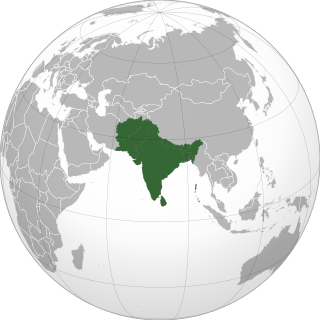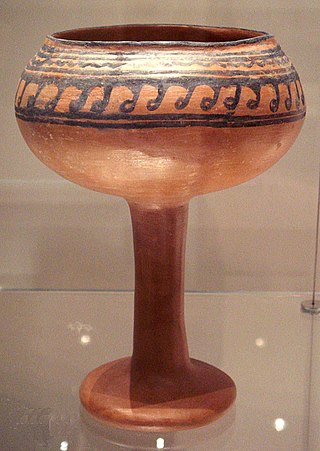
Madhya Pradesh is a state in central India. Its capital is Bhopal, and the largest city is Indore, with Jabalpur, Ujjain, Gwalior, Sagar, Satna, Narmadapuram, Shahdol, Rewa and Morena being the other major cities. Madhya Pradesh is the second largest Indian state by area and the fifth largest state by population with over 72 million residents. It borders the states of Uttar Pradesh to the northeast, Chhattisgarh to the east, Maharashtra to the south, Gujarat to the west, and Rajasthan to the northwest.

Malwa is a historical region of west-central India occupying a plateau of volcanic origin. Geologically, the Malwa Plateau generally refers to the volcanic upland north of the Vindhya Range. Politically and administratively, it is also synonymous with the former state of Madhya Bharat which was later merged with Madhya Pradesh. At present the historical Malwa region includes districts of western Madhya Pradesh and parts of south-eastern Rajasthan. Sometimes the definition of Malwa is extended to include the Nimar region south of the Vindhyas.
Ujjain is a city in Ujjain district of the Indian state of Madhya Pradesh. It is the fifth-largest city in Madhya Pradesh by population and is the administrative centre of Ujjain district and Ujjain division. It is one of the Hindu pilgrimage centres of Sapta Puri famous for the Kumbh Mela held there every 12 years. The famous temple of Mahakaleshwar Jyotirlinga is located in the center of the city. The city has been one of the most prominent trade and political centres of Indian Subcontinent from the time of Ancient Mahajanapadas up until the British Colonization of India.

Shajapur District is a district of Madhya Pradesh state of central India. The town of Shajapur is the district headquarters.

The Kali Sindh, is a river in Madhya Pradesh and Rajasthan in northern India. It is a tributary of the Chambal River in the Ganges Basin. The main tributaries of the Kali Sindh are the Parwan, Niwaj and Ahu rivers. The Kali Sindh River drains a major portion of the Malwa region, and is the biggest river flowing in the Malwa region of Madhya Pradesh.

Chitragupta is a Hindu deity who serves as the registrar of the dead. He is assigned with the task of maintaining the records of the actions of human beings in a register called the Agrasandhanī. Upon the death of a human and their arrival at Yamaloka, Chitragupta reads out their deeds, allowing the god of death, Yama, to decide whether they go to Svarga or Naraka, depending on their actions on earth. Chitragupta is the seventeenth manasaputra of Brahma. He is believed to have been created from Brahma's soul and mind (chit) and thus is allotted the right to write Vedas like a Brahmin, and also assigned the duty of a Kshatriya.

The Ochre Coloured Pottery culture (OCP) is a Bronze Age culture of the Indo-Gangetic Plain "generally dated 2000–1500 BCE," extending from eastern Punjab to northeastern Rajasthan and western Uttar Pradesh.

The South Asian Stone Age covers the Palaeolithic, Mesolithic and Neolithic periods in South Asia. Evidence for the most ancient Homo sapiens in South Asia has been found in the cave sites of Cudappah of India, Batadombalena and Belilena in Sri Lanka. In Mehrgarh, in what is today western Pakistan, the Neolithic began c. 7000 BCE and lasted until 3300 BCE and the first beginnings of the Bronze Age. In South India, the Mesolithic lasted until 3000 BCE, and the Neolithic until 1400 BCE, followed by a Megalithic transitional period mostly skipping the Bronze Age. The Iron Age began roughly simultaneously in North and South India, around c. 1200 to 1000 BCE.

Vishnu Shridhar Wakankar was an Indian archeologist. Wakankar is credited with the discovery of the Bhimbetka rock caves in 1957 and the Kayatha culture in 1964, among others. In 2003, UNESCO inscribed the Bhimbetka rock caves as a World Heritage Site. The Bhimbetka rock caves exhibit one of the earliest traces of human life in India.

Pottery in the Indian subcontinent has an ancient history and is one of the most tangible and iconic elements of Indian art. Evidence of pottery has been found in the early settlements of Lahuradewa and later the Indus Valley Civilisation. Today, it is a cultural art that is still practiced extensively in Indian subcontinent. Until recent times all Indian pottery has been earthenware, including terracotta.

The history of Madhya Pradesh can be divided into three periods - the ancient period, the medieval period and modern period.
Govardhan Rai Sharma (1919-1986) was a Historian from Allahabad University who led the Kausambi excavations which added to original historical research in the country. The ruins of this ancient city were found on the left bank of the river Yamuna, 70 km south-west from Allahabad. Thus commenced excavations of the site by the late Prof. G.R. Sharma of the Allahabad University in 1949 and again in 1951-1956. Following these excavations numerous remains of the ancient city came to light. He is among the historians who brought archeology in the mainstream of studying History.
Madhukar Keshav Dhavalikar was an Indian historian and archaeologist.
Jorwe is a village and an archaeological site located on the Pravara, a tributary of the Godavari River in Sangamner taluka of Ahmednagar district of Maharashtra state in India. This site was excavated in 1950-51 under the direction of Hasmukh Dhirajlal Sankalia and Shantaram Bhalchandra Deo.
Inamgaon, in Maharashtra, is one of the largest Chalcolithic settlements in India. It has been estimated that at one time, about 1,000 people may have lived here. The settlement lasted for over 900 years.

Barkheda is a village in the Obedullaganj block of the Raisen District of Madhya Pradesh, India. Alternative English spellings of its name include Bharkada and Barkhera. It is a census-designated place with the code 484296 (2011).
Dongargaon, Agar Malwa is a town and a Gram Panchayat, near town of Agar in Agar Malwa district in the Indian state of Madhya Pradesh. It is located on the Indore–Kota National Highway on the bank of Kali Sindh River. It is surrounded by the border with the state of Rajasthan from three sides and is a well-known center of transport business between the two states.

The Malwa culture was a Chalcolithic archaeological culture which existed in the Malwa region of Central India and parts of Maharashtra in the Deccan Peninsula. It is mainly dated to c. 1600 – c. 1300 BCE, but calibrated radiocarbon dates have suggested that the beginning of this culture may be as early as c. 2000-1750 BCE.

The Jorwe culture was a Chalcolithic archaeological culture which existed in large areas of what is now Maharashtra state in Western India, and also reached north into the Malwa region of Madhya Pradesh. It is named after the type site of Jorwe. The early phase of the culture is dated to c. 1400-1000 BCE, while the late phase is dated to c. 1000-700 BCE.

Navdatoli is the name of a modern day village, but can also refer to a chalcolithic era settlement located on the Narmada River in Madhya Pradesh in central India. The ancient village was inhabited through four temporal stages, each defined by distinct types of pottery. The site was originally excavated between 1957 and 1959 over two seasons. Both the village and the site are located roughly a mile south of the modern day town of Maheshwar.












